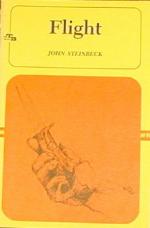|
This section contains 1,849 words (approx. 7 pages at 300 words per page) |

|
Piloting an aircraft requires constant scanning and verifying of measurements. Pilots develop a sense of reasonable measurements for routine situations. For non-routine situations, pilots practice in simulators so they can quickly make sense of the measurements they see on the aircraft's instrument panel. When necessary, they can make rapid decisions to correct for unanticipated conditions. The U.S. customary system of measurement is used, because that is the system used by most pilots in the United States and worldwide.
Level Flight
On an aircraft, a propeller or jet engine provides thrust, which moves the plane forward through the air. Thrust acts parallel to the direction of flight. The weight of the aircraft is the force of gravity acting toward the center of Earth. The aerodynamic forces of lift and drag result from air pressure. Lift, the vertical component, acts to oppose gravity. Drag acts...
|
This section contains 1,849 words (approx. 7 pages at 300 words per page) |

|


